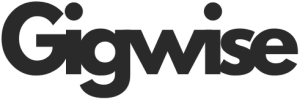Plagiarism detection tools have become standard in educational settings, widely adopted to discourage copying and promote originality. Yet, many users still misunderstand what these tools actually do. They are often seen as definitive arbiters of honesty rather than complex software with specific functions and limitations. This article offers a closer look at how plagiarism checkers contribute to academic integrity without overstating their power.
Some students rely on these tools to safeguard their work before submission. Others use them at the recommendation of instructors or institutions. If you want to avoid citation mistakes or accidental duplication, it makes sense to check your paper for plagiarism on StudyPro as part of your revision process. Still, these tools do not determine intent or replace ethical writing habits.
To use them effectively, both students and educators need a realistic view of how plagiarism detection works, what it reveals, and what responsibilities remain with the human author.
How Plagiarism Checkers Actually Work
Plagiarism checkers are software systems designed to identify similarities between a submitted text and an extensive database of existing sources. These sources may include journal articles, academic papers, websites, books, and previously submitted student work. The tool scans for overlapping sequences of words, phrases, or sentence structures that match indexed content.
The underlying technology varies but typically relies on algorithms that compare the linguistic and syntactic patterns of the submitted text against known materials. Some tools use fingerprinting or string matching, while others incorporate machine learning to improve contextual analysis. However, most still depend on surface-level similarities and cannot evaluate originality in a meaningful way.
A high similarity score does not automatically mean plagiarism. Quotations, common phrases, or properly cited content may trigger matches. Conversely, sophisticated rewording may bypass detection. This means that while checkers can highlight potential issues, human interpretation is still required to assess intent and accuracy.
Effective use of plagiarism checkers depends on user literacy. Educators must teach students how to interpret reports correctly and how to revise flagged sections without distorting meaning. When used as learning tools rather than punitive traps, plagiarism detectors can reinforce academic standards without promoting fear or confusion.
The Effectiveness Gap
Despite their widespread use, plagiarism checkers do not offer complete or consistent coverage. Their databases vary significantly in size and scope, which means detection results are only as strong as the sources available for comparison. Open-access internet content is often well covered, but proprietary journals, books, or regionally published materials may be excluded. As a result, two different tools may return completely different similarity scores for the same paper.
Another limitation is that most checkers analyze surface-level similarity. They cannot reliably detect idea plagiarism, structural mimicry, or conceptual rewording. This leaves significant gaps when students copy arguments or closely follow the logic of another work without duplicating exact phrases. In such cases, the originality report may show a low match score, even if the work lacks true independence.
False positives also complicate the picture. Properly cited quotations, commonly used academic phrases, or technical definitions may be flagged as matches, even when the student has done nothing wrong. This can lead to confusion or misplaced penalties if educators rely too heavily on software output without contextual review.
Ultimately, plagiarism checkers are only tools and not verdicts. Their effectiveness depends on how they are used, interpreted, and integrated into teaching practices. Educators who treat detection software as a supplement to instruction, rather than a replacement for it, will get better results and reduce the risk of over-reliance or misjudgment.
Impact on Student Behavior and Learning

(https://unsplash.com/photos/a-library-filled-with-lots-of-books-and-people-d2cZAIUgxOw)
Plagiarism detection software affects how students approach writing, both positively and negatively. Its presence in the academic process can shape habits, improve awareness, or trigger counterproductive strategies, depending on how it is introduced and supported.
Key effects include:
- Increased awareness of academic standards
Many students become more mindful of citation rules and originality expectations after using plagiarism checkers, especially when paired with clear feedback.
- Preventative self-checking
Some students use these tools proactively to catch mistakes, check paraphrasing, and reduce unintentional duplication before submission.
- Overemphasis on scores
A focus on similarity percentages can distract from the real goal of developing ideas. Students may become more concerned with reducing match rates than improving content.
- Mechanical paraphrasing
To avoid detection, some students rely on superficial rewriting techniques instead of learning how to truly engage with and explain material in their own words.
- Uncertainty and mistrust
False positives or unclear reports can create confusion, especially when students are penalized without explanation or guidance.
Plagiarism checkers work best when paired with instruction. When students understand how the tools function and why originality matters, they are more likely to develop strong writing skills rather than just avoiding detection.
The Faculty and Institutional Perspective
For faculty and academic institutions, plagiarism detection tools serve multiple roles: maintaining academic standards, deterring misconduct, and streamlining the evaluation process. However, their benefits also come with challenges that require careful consideration.
Key considerations include:
- Administrative efficiency
Plagiarism checkers save time by identifying potential issues quickly, especially in high-volume grading environments.
- Policy enforcement
Detection software helps uphold institutional integrity policies, providing documentation when academic violations occur.
- Teaching limitations
When over-relied on, these tools may replace meaningful conversations about source use, citation, and ethical writing.
- Student perception
If used without transparency, checkers may be seen as punitive rather than supportive, which can damage trust and engagement.
- Faculty responsibility
Instructors must still interpret results, distinguish between types of similarity, and provide context-based feedback to students.
Effective use of plagiarism detection depends on alignment with educational values. Institutions that view these tools as part of a larger academic integrity strategy rather than a substitute for mentorship will better support both students and faculty in achieving shared goals.
Toward a More Balanced Approach
Instructional Use of Detection Tools
Plagiarism detection software should not be viewed solely as a disciplinary measure. When introduced as a teaching tool, it can support students in developing responsible writing habits. By reviewing similarity reports alongside feedback, students gain insight into proper citation, paraphrasing, and source integration. This turns the tool into a point of learning rather than a threat.
Faculty Involvement and Oversight
Effective use requires faculty to interpret results accurately and guide students through revisions. A match score alone does not indicate a problem. Instructors should clarify why certain sections are flagged and help students distinguish between technical matches and genuine misconduct. This reinforces writing instruction while maintaining fairness.
Student Access and System Transparency
Students benefit most when they are allowed to run their own reports and understand how the system works. Transparency builds trust and encourages proactive engagement. Institutions that provide access and explanation reduce confusion and promote academic growth.
A Culture of Academic Integrity
Plagiarism checkers should be part of a broader framework that includes clear policies, supportive instruction, and consistent communication. A balanced approach reinforces shared responsibility and academic values, helping students improve their work while meeting institutional standards without fear or guesswork.
Conclusion
Plagiarism detection tools play a valuable role in promoting academic honesty, but their impact depends on how they are used. These systems are not definitive judges of integrity. They are aids and are most effective when paired with clear instruction, human interpretation, and transparent policies.
Students benefit when they understand how to use checkers to improve their writing rather than simply avoid penalties. Faculty gain more when the tools are used to support feedback, not replace it.
A thoughtful, balanced approach strengthens trust in the academic process. When institutions treat plagiarism detection as part of a larger strategy for teaching responsible writing, they promote deeper learning, clearer expectations, and a stronger culture of academic integrity across all levels of education.





















